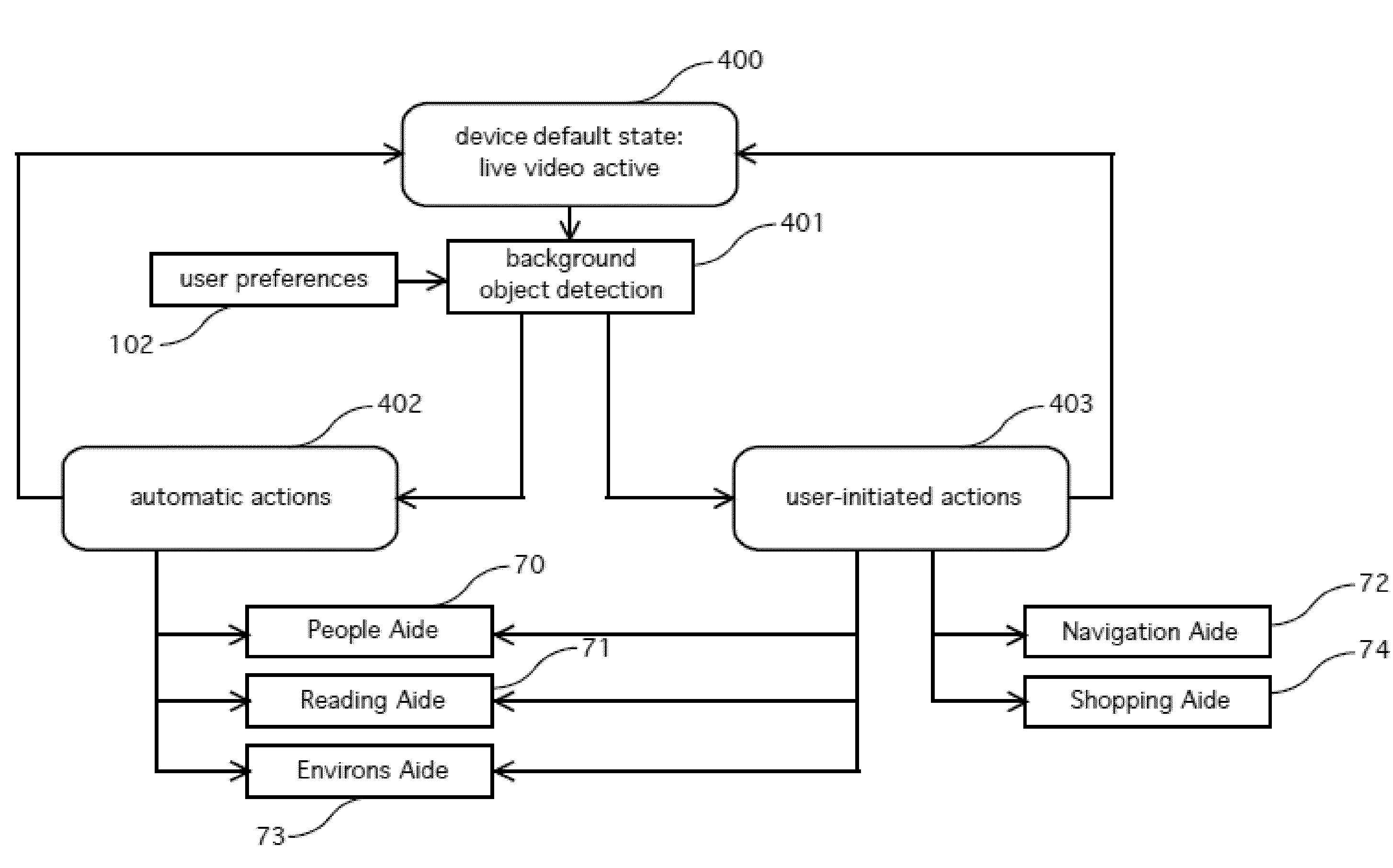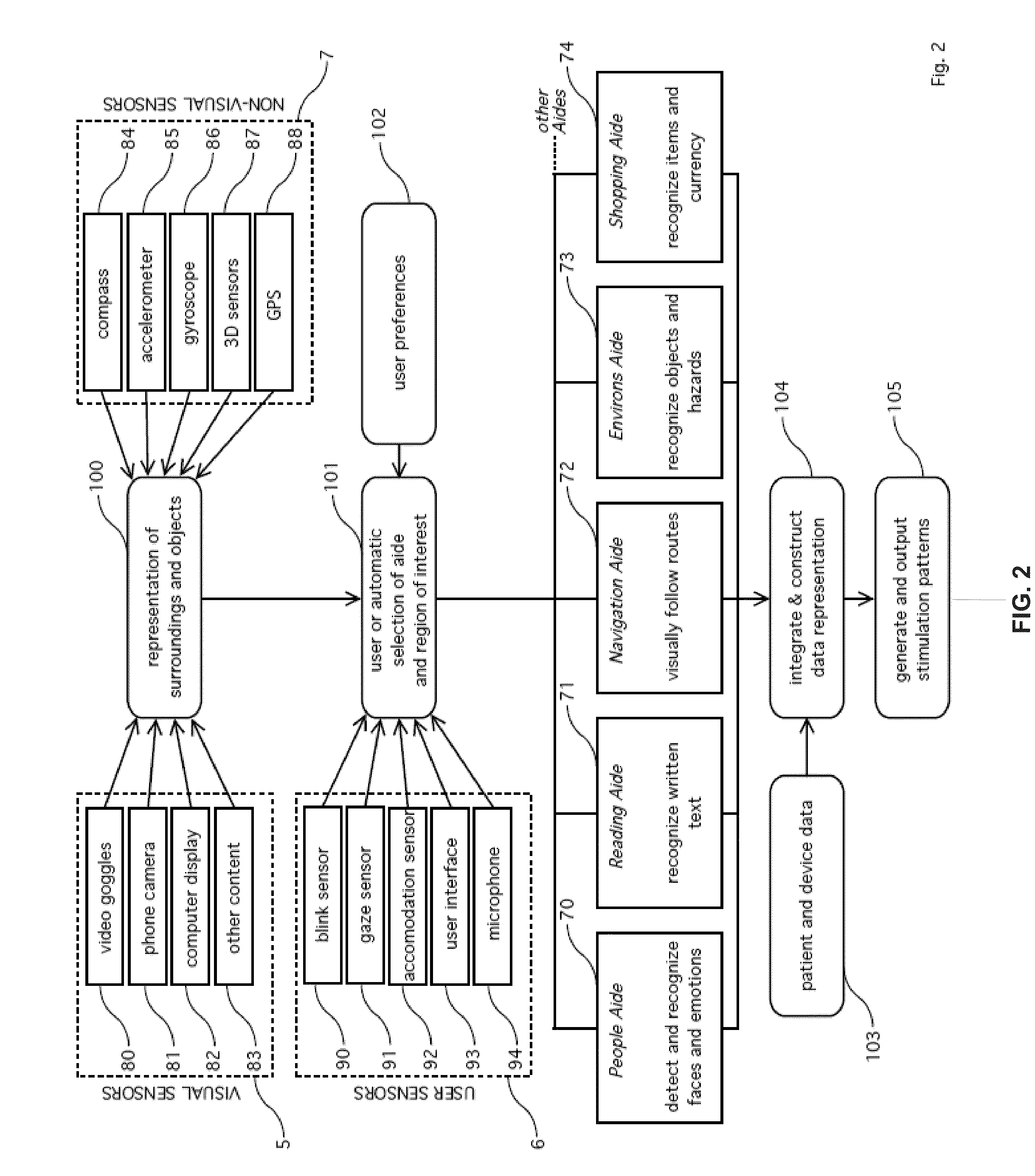Smart prosthesis for facilitating artificial vision using scene abstraction
- Summary
- Abstract
- Description
- Claims
- Application Information
AI Technical Summary
Benefits of technology
Problems solved by technology
Method used
Image
Examples
Embodiment Construction
[0035]As is discussed more fully below, the smart prosthesis described herein is generally not adapted to register veridically an approximation of a pixilated visual image incident on a camera, nor to mimic retinal processing, as do conventional visual prostheses. Rather, embodiments of the smart prostheses gather information about the external world of a user from a variety of sources (e.g., cameras, sensors, databases) to intelligently extract high-level information about people, objects and spatial relationships in a manner most relevant to a task being performed by a user. This information may then be processed into a stream of pixel values useable to stimulate retinal neurons in a way that creates an abstracted but meaningful artificial image of the world and efficiently uses the limited number of available stimulation sites.
[0036]To create a useful visual representation, in one embodiment the smart prosthetic device gathers information about the world and the user's relationsh...
PUM
 Login to View More
Login to View More Abstract
Description
Claims
Application Information
 Login to View More
Login to View More - R&D
- Intellectual Property
- Life Sciences
- Materials
- Tech Scout
- Unparalleled Data Quality
- Higher Quality Content
- 60% Fewer Hallucinations
Browse by: Latest US Patents, China's latest patents, Technical Efficacy Thesaurus, Application Domain, Technology Topic, Popular Technical Reports.
© 2025 PatSnap. All rights reserved.Legal|Privacy policy|Modern Slavery Act Transparency Statement|Sitemap|About US| Contact US: help@patsnap.com



